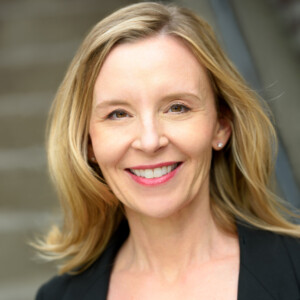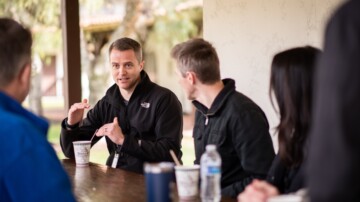Advice from Grantmakers on Streamlining Your Tech Solutions

In what ways does technology boost your team’s efficiency and grantmaking—and in what ways can it hold you back? This post features advice from IT and grants management experts on how to streamline your tech solutions, create clear processes, and drive more external and internal impact.
It was mid-August 2023—only days after the devasting fires on Maui that destroyed an entire town and left many missing. Lisa Tacker and her team at Two Ten Footwear Foundation, a charitable foundation based near Boston, were scrambling.
This wasn’t Tacker’s first go at responding to a disaster. As the vice president of Two Ten’s relief program and IT, Tacker brings her technology expertise to Two Ten’s mission of providing emergency assistance and financial support in the form of cash grants to footwear employees and their families who are dealing with financial hardships or have been affected by natural disasters. Through hurricanes, fires, floods, the pandemic, and more, Two Ten awards millions of dollars in emergency relief each year, and they rely 100% on donor dollars to do it.
Reaching people in the midst of a major disaster is challenging, said Tacker, and the Foundation depends heavily on its technology platform for outreach and processing. “In the days following the fires in Maui, many people didn’t have access to Internet, cell service, even land phone lines. We were able to leverage our technology to reach the HR departments at all the known footwear stores on the island,” she said.
The Foundation uses the Blackbaud Grantmaking system, and to expedite the timing, grants managers completed applications on behalf of island employees. “I received a list of employees on Tuesday, and we were able to process all applications by Wednesday afternoon and issue checks electronically. Within days, 40 or more people received $500 to $1,000 via e-check, which they were able to directly deposit into their bank accounts. Many of these people told us this was the first financial help they received.” In addition to these immediate cash grants, Two Ten provides information and referral services for counseling and other support.
Streamlining Technology for the Good of Grantees
Two Ten wasn’t always able to move this quickly. In years past, there was no online application, a clunky, manual database, and checks that had to be processed, printed, and mailed, said Tacker. That changed after the pandemic when Tacker and her team streamlined their tech systems for more efficiency.
“In the case of the Maui fires, many people lost their home, or they lost power for days. Everyone on the island suffered a loss. It wouldn’t even make sense to mail a check in a situation like this. Streamlining our application and accounting processes and integrating an e-checks system has been a gamechanger for our grantees. A check run used to take up to three days. Now it takes less than three hours.”
Her team has also streamlined software for more efficient internal operations—making sure employees have the technology they need without overdoing it. “When I first joined the Foundation, we had an outdated server that people accessed via VPN. There was also no policy in place for software subscriptions. At one point, we had 15 employees with 15 separate Dropbox subscriptions,” said Tacker. “Right before the pandemic hit, we migrated everyone to the cloud, and put all our files on SharePoint. I wanted to make sure our employees could access the data from wherever they were. When the decision was made to close our offices during the pandemic, we didn’t miss a beat.” Additionally, she said, they consolidated their software subscriptions, and IT now holds the licenses. It has created more structure and consolidation across the organization and saves money too.
Even with their streamlined technology, one thing that won’t change for Two Ten is having a real person available to pick up the phone. “We are more than a call center answered by a bot. Many of the people we talk with are having the worst day of their lives. The amount of money we can give isn’t life-changing for them, but it can help out in a tight situation. And in those moments, having a live human on the line who listens and cares can truly mean something.”
Moving to a More Flexible Grantmaking Process
The McKnight Foundation in Minneapolis knows that how they do grantmaking is as critical as what they fund. Within the last three years, the Foundation has taken steps to be nimble and more adaptive in its funding—streamlining its technology, simplifying its grantmaking processes, and waiving some of its application requirements.
“As we thought about streamlining our grantmaking process, we first looked at which steps of our application process were critical for our due diligence, and where there were redundancies,” said grants manager Dorothy Wickens, who has been with McKnight for 11 years. “It was important to us to have fewer touchpoints for our grantees, so that they can spend less time on our process and technology, and more time on focused on their missions.”
McKnight used to require two application steps: a letter of inquiry, followed by a full proposal. Working within the Blackbaud Grantmaking system, they were able to use a tool to switch to a single-stage application process, and tack on a quiz at the front-end to help grant applicants assess their eligibility. This, along with rolling deadlines, ideally lessens the burden on grantees and expedites the internal grant review process, said Wickens—leading to a more efficient process and a quicker turnaround time to get to grant decisions.
Take Stock of Your Tech Stack
While this grantmaking redesign work was in motion, McKnight’s IT director of information technology Tony Lusiba and team were busy assessing and updating the tech stack across the entire organization. “When I joined McKnight in the middle of the pandemic, we were still using our legacy technology,” Lusiba said. “Our teams needed collaboration tools and ways to work remotely, and as an enterprise, we needed to set standards, modernize our technology, and move to the cloud.”
To do so, Lusiba and team first took inventory of all the different technology used across the Foundation. “I met with each department to learn what they use, what does licensing look like, and where does our data live. I learned which apps are used across the enterprise, which are used only by a specific group of people, and where we have redundancies.” With this inventory, the IT team could then track where the Foundation was paying unnecessary fees for duplicate licenses, and where it could consolidate. They continue to monitor this information on a SharePoint list to evaluate needs, trends, and expenses over time—and sunset apps when needed.
Before sunsetting any app, though, they have to make sure people aren’t solely relying on it. “Different people are at varying levels of their journey when it comes to technology—and different teams and their grantee partners have different needs,” he said. “When making any changes to our tech platform, we must move thoughtfully, and take people inside and outside the Foundation into consideration.”
How does an IT team balance the right amount of technology for teams without overwhelming them? Delicately, says Lusiba. “We have a lot of new apps all the time—maybe 10 since I arrived. We modernized in order to work in a hybrid fashion, and that meant understanding the requirements of the new technology, testing it, and getting it up and running. For some of these apps, we’re still in adoption phase. Yet, we’re much more cohesive in our technology solutions across the Foundation, and at a place where people don’t feel like they are drowning in new apps.”
“If your organization has dozens of applications and keeps adding more, ask yourselves: why do we need that many? The more choices you have, the harder it is to make a decision and maintain continuity across the organization,” said Lusiba. “If you can consolidate to a core set of applications that help you do what you need to do well, it will make your governance and management much easier. You’ll know where your data is, and you’ll be able to keep it more secure.”
Streamlining your tech solutions and grantmaking may seem daunting at first, yet it’s a process worth undertaking. Think of it as a tool to empower your mission, boost your efficiency, and enable you to become a better partner to your grantees and peers. And in the case of all those apps? Less may truly be more.
Want to learn more about how these grantmakers and others simplified their grantmaking technology? Check out our webinar, “Too Much Tech? How to Streamline Your Solutions for Better Grantmaking and Operations” for actionable tips to creating more efficiency with your grantmaking technology.


